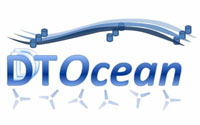| Nov 13, 2013 | |
New design tools for the deployment and improvement of ocean energy arrays |
|
| (Nanowerk News) The DTOcean (Optimal Design Tools for Ocean Energy Arrays) initiative will allow a suite of design tools to be developed for the deployment of ocean energy arrays. These tools will be contributing towards open-sea demonstration in ocean energy arrays of the technologies for capturing ocean current energies and wave energies. DTOcean uses the best European R&D, a benchmark worldwide in this field. | |
 What is more, the initiative is driving forward a new model of collaborative, open-code development for design tools for ocean arrays; this involves the validation of a complete model based on the actual demonstration of array projects and implemented by the very developers of the projects and players in the supply chain that is part of DTOcean. Key factors DTOcean will be adopting a global approach to the whole system. The design tools for ocean arrays will be seeking to provide general information and the knowledge needed to allow developers of ocean array projects to avail themselves of all the necessary information in order to enable them to take decisions. The various working and operating parameters of marine energy arrays must be studied carefully because a key factor in developing them is energy cost. Various key research areas have been identified and they will need to be tackled so that the offshore energy sector can achieve marketing by means of the deployment of ocean arrays: |
|
|
|
|
| Organisations | |
| The project, which is part of the European Commission’s 7th FP on Energy for the development of “Optimal Design Tools for Ocean Energy Arrays” (DTOcean), was launched on 28 October 2013 with total funding in excess of 6 million euros. | |
| The Policy and Innovation Group of the University of Edinburgh led the proposal and will be coordinating the consortium made up of 18 international members from 11 countries with a national laboratory on renewable energies of the United States as the only non-European member. The members are research centres, supply chain representatives and project developers (Vattenfall, Iberdrola and Deme). | |
|
|
| Source: Tecnalia |

